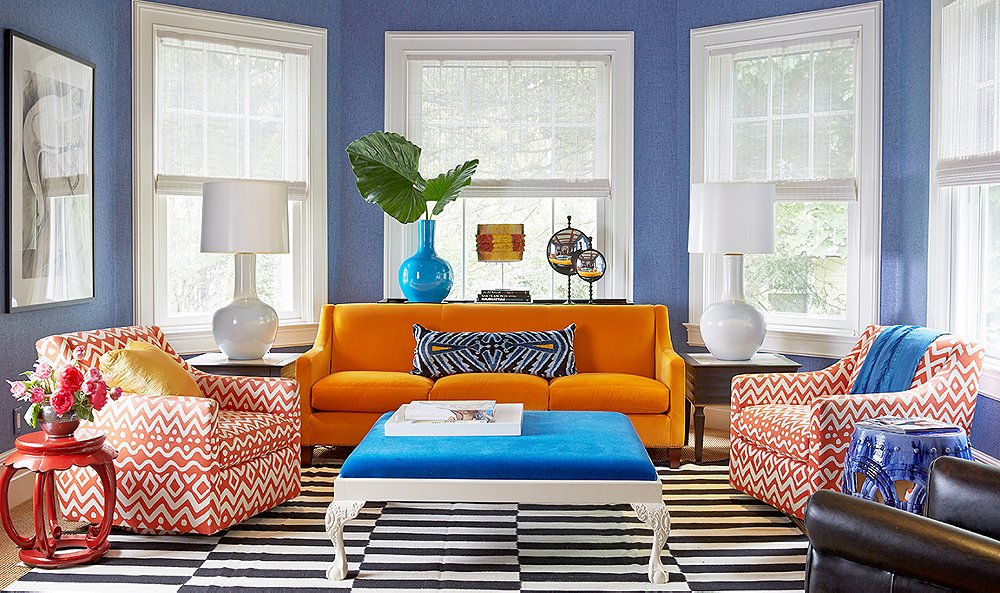I, Mark Roemer, want to take you back in time to when you first learned about primary colors like red, yellow, and blue. Secondary colors such as green, orange, and purple may also come to mind. The color wheel is made up of these color combinations. These color schemes aren’t only pretty to look at; when employed right, they can help you transform your flat from drab to spectacular.
You can transform any dull area into an appealing and eye-catching space that you love to call home by using complementary colors and the fundamentals of color theory. I’ll take you through the fundamentals of modern color theory and show you how to make the most of opposite colors!
Color Theory
Consider the color wheel, which depicts the color spectrum like a rainbow of colors. A color wheel is a valuable tool for mapping out all colors and seeing color combinations that work well together and the relationships between them. The color wheel, by the way, was invented by Sir Isaac Newton.
Let’s go over a few definitions before showing you some complementary color patterns.
Colors from the primary spectrum
The primary hues are red, yellow, and blue. By combining these three colors, you may make practically any other color.
Colors from the secondary spectrum
Green, orange, and purple are the secondary colors. You may make them by combining any two primary colors. Blue and yellow, for example, can be combined to generate green, or red and blue can be combined to make purple.
Colors from the tertiary spectrum
Tertiary colors are created by mixing any two colors. You can do this by simply blending any primary or secondary color; you may build a broad color pallet and make other colors such as blue-violet, blue-purple, red-violet, or red-purple. The possibilities are infinite!
Tetradic colors in the Blue-green spectrum
Four evenly spaced colors are represented on the wheel in a tetradic color scheme. Red, green, blue, and purple, for example, are tetradic hues because they are evenly spaced on the color wheel.
Similar color schemes, such as yellow-green
Three colors next to each other on the color wheel form an analogous color scheme. This could be three different shades of the same color or tones of blue-green, yellow-green, or yellow-orange, all adjacent on the color wheel. Warm or cool colors are analogous to each other. If you’re going with an analogous color scheme, you might want to pick one shade or hue as the third color to keep things from looking too busy.
Color model in RGB
You’ve probably heard of RGB colors, which stand for red, green, and blue. RGB is a means for web designers to blend light online.
The color wheel aids in the creation of pleasing color combinations for everyone. Color harmony is formed when two or more colors look excellent together. Color schemes and color harmonies can benefit artists, designers, and apartment dwellers.
Now that I’ve covered the basics of color theory, let’s discuss complementary colors and how complementary pairs can make your residence a visual wonderland.
What are complementary colors, and how do you use them?
Colors opposite each other on the color wheel are known as complementary colors. The three evenly spaced hues on the color wheel generate geometric relationships.
Orange and blue, magenta and green or red and green, and yellow and purple are examples of complementary colors. Look at the circle displaying one color, then move your gaze to the opposite side to view the complementary hue. The colors you choose will add visual interest to your flat and make it a relaxing place to live.
Why do people choose complementing colors?
Complementary colors appeal to us because they contrast nicely and have a substantial impact when compared to one another. They complement each other and make the different hues pop. “Color makes its impact through contrast rather than inherent features,” stated Claude Monet, one of the world’s most famous artists. “The primary colors seem more brilliant when they are in contrast with their complementary colors.”
It’s a safe bet that if great artists employed complementary hues, you should, too. Using contrasting colors in your home decor will help you transform any ordinary apartment area into a spectacular one.
In your apartment, use a color wheel
Are you prepared to put your knowledge of color theory to the test? Here are some examples of employing complementary colors in your residence to your advantage.
Blue and orange are complementary colors.
Blue and orange are a color combination that blends warm and cold colors. The cool shade is blue, and the warm color is orange. Paint, gorgeous images, furniture, or a combination can create a complementary color scheme when decorating an apartment with varied colors.
You’ll want to pick a color that will stand out. You could, for example, paint an entire wall blue and then add orange accents to make the other color stand out. If you cannot change the colors of your apartment’s walls, you might use furnishings.
